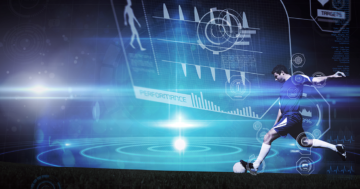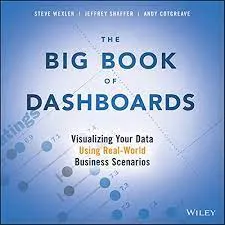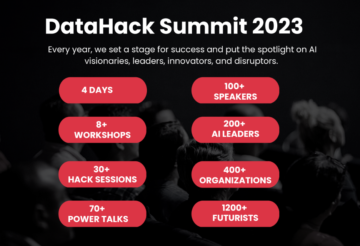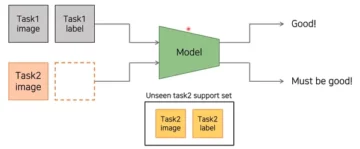Introduction
Imagine a world where your morning alarm adjusts to traffic conditions, your coffee brews to your exact preference before you even get out of bed, and your commute is planned with the perfect balance of speed and scenic detours. This sci-fi dream is becoming a reality thanks to Artificial Intelligence. AI is here to transform your daily life, from streamlining your schedule to personalizing your entertainment. Let’s explore the various uses of AI in daily life.
Overview
- Find out 25 different ways in which you can use AI
- Learn to use AI to increase your productivity and make the most of your day.
- Get to know some of the latest and best AI tools and apps available for various daily tasks such as content generation, fitness tracking, meal planning, learning, and more.

Table of Contents
25 Ways to Use AI in Your Daily Life
Here are 25 different uses of AI in daily life!
Voice Assistants for Note-Taking and Reminders

- Using Siri, Alexa, and Google Assistant for Taking Notes
Let’s begin with one of the most common applications of AI in daily life – voice assistants! Voice assistants like Siri, Alexa, and Google Assistant can greatly help you manage daily tasks. One of their best uses is for taking down notes quickly and efficiently. Just say, “Hey Siri, take a note,” and your thought is saved instantly. This feature is incredibly useful for capturing ideas on the go or making daily shopping lists.
-
Setting Reminders and Managing Daily Tasks with Voice CommandsSetting reminders with voice commands is another significant advantage of using AI in your daily life. You can ask a voice assistant to remind you of a chore or appointment, and it will automatically set a reminder for you. For instance, simply say, “Alexa, remind me to call mom at 6 PM,” and it will add it to your schedule and remind you at the right time. It’s never been simpler to keep track of your to-do list. You can even schedule messages to be sent or set alarms this way.
Learn More: How to create your AI Virtual Assistant using Python
AI-Powered Content Creation

- Writing Articles, Blog Posts, and Emails Using AI Tools Like ChatGPT
Creating content has become easier than ever with AI-powered tools like ChatGPT, Claude AI, and Gemini. These tools help you write articles, blog posts, and emails within minutes. Simply provide a prompt, and the AI generates well-structured text effortlessly. You can use these tools to create outlines, write summaries, or even entire books! They are perfect for writers looking to overcome writer’s block or those needing quick content.Learn More: AI Content Creation: Top 10 Tools, Impact & Future
- Generating Social Media Posts Using AI Prompts
Did you know that AI can also generate social media posts? You give the AI a brief description or keyword, and it creates engaging posts tailored to your audience. This saves time and keeps your social media presence active and relevant. - Creating Image Captions with AI
AI helps in creating image captions as well. Tools like WriterBuddy AI can generate Instagram captions from images. By providing a brief description, AI generates captions that match the image content. This ensures your posts are engaging and well-written.
Learn More: Image To Caption Generator For Instagram
Health and Fitness Monitoring
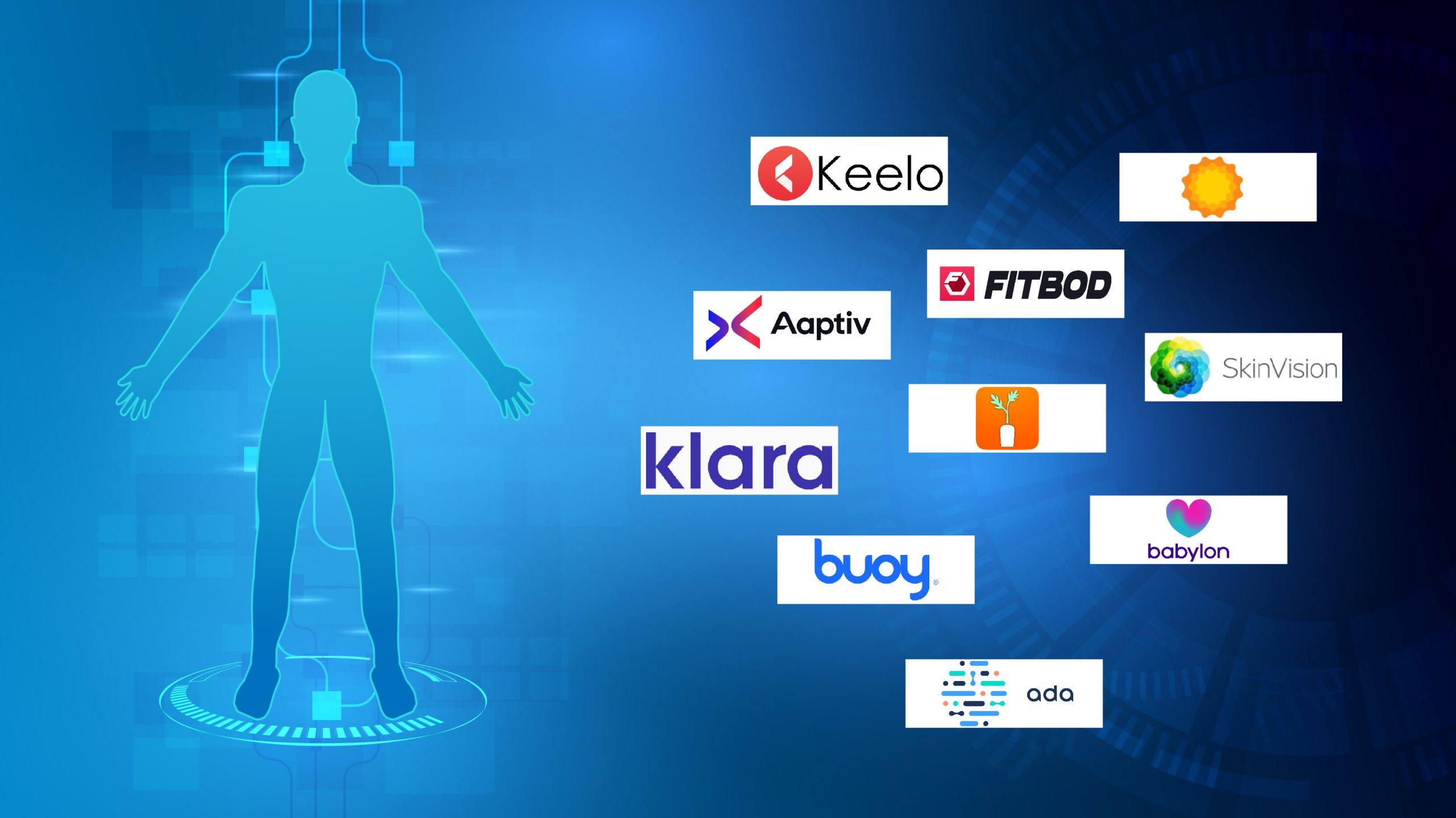
- Using Wearable Devices with AI to Track Health Metrics and Workouts
Wearable devices like smartwatches and fitness trackers have revolutionized health monitoring. These gadgets are using AI to track various health metrics, such as heart rate, sleep patterns, and physical activity. For instance, the Apple Watch can monitor your heart rate and alert you of any irregularities. Similarly, Fitbit devices can track your steps, distance traveled, and calories burned during workouts. - Understanding Health Patterns and Trends
AI in wearables and fitness monitors analyzes the collected data to provide insights into your health. These devices can be used to identify trends and patterns in your day-to-day actions. For instance, AI can monitor your progress and motivate you to meet your daily step target if your purpose is to walk 10,000 steps. - Creating Personalized Fitness Plans Based on User Data
AI not only tracks your activities; it also offers personalized fitness plans. Based on your health data, AI can recommend workout routines that suit your fitness level and goals. For example, if your goal is to lose or gain weight, the AI can create a plan that includes a mix of cardio and strength training exercises based on your body type. - Getting Health and Lifestyle Recommendations
AI health recommendations go beyond workouts. AI can suggest dietary changes and sleep improvements based on your data. For instance, if your sleep tracker shows poor sleep quality, the AI might recommend a bedtime routine to help you sleep better. These personalized recommendations make it easier to maintain a healthy lifestyle tailored to your needs and in sync with your busy schedule.
Learn More: Top 10 AI Apps for Healthcare and Fitness
Financial Management Tools

- Budgeting and Expense Tracking with AI-Driven Apps
Managing finances can be challenging, but AI-driven apps make it a lot easier. Apps like Mint and YNAB help you create budgets, track expenses, and manage your money efficiently. They categorize your expenses and analyze spending habits to provide valuable insights. This helps you understand where your money is going and make better financial decisions. - Setting Up Alerts and Predictions for Better Financial Planning
AI-powered budgeting apps can alert you when you’re overspending in certain categories. It can also predict future expenses based on past spending patterns. This helps you plan better and avoid financial pitfalls. By anticipating upcoming expenses, you can adjust your budget and stay on track financially.
Smart Home Automation
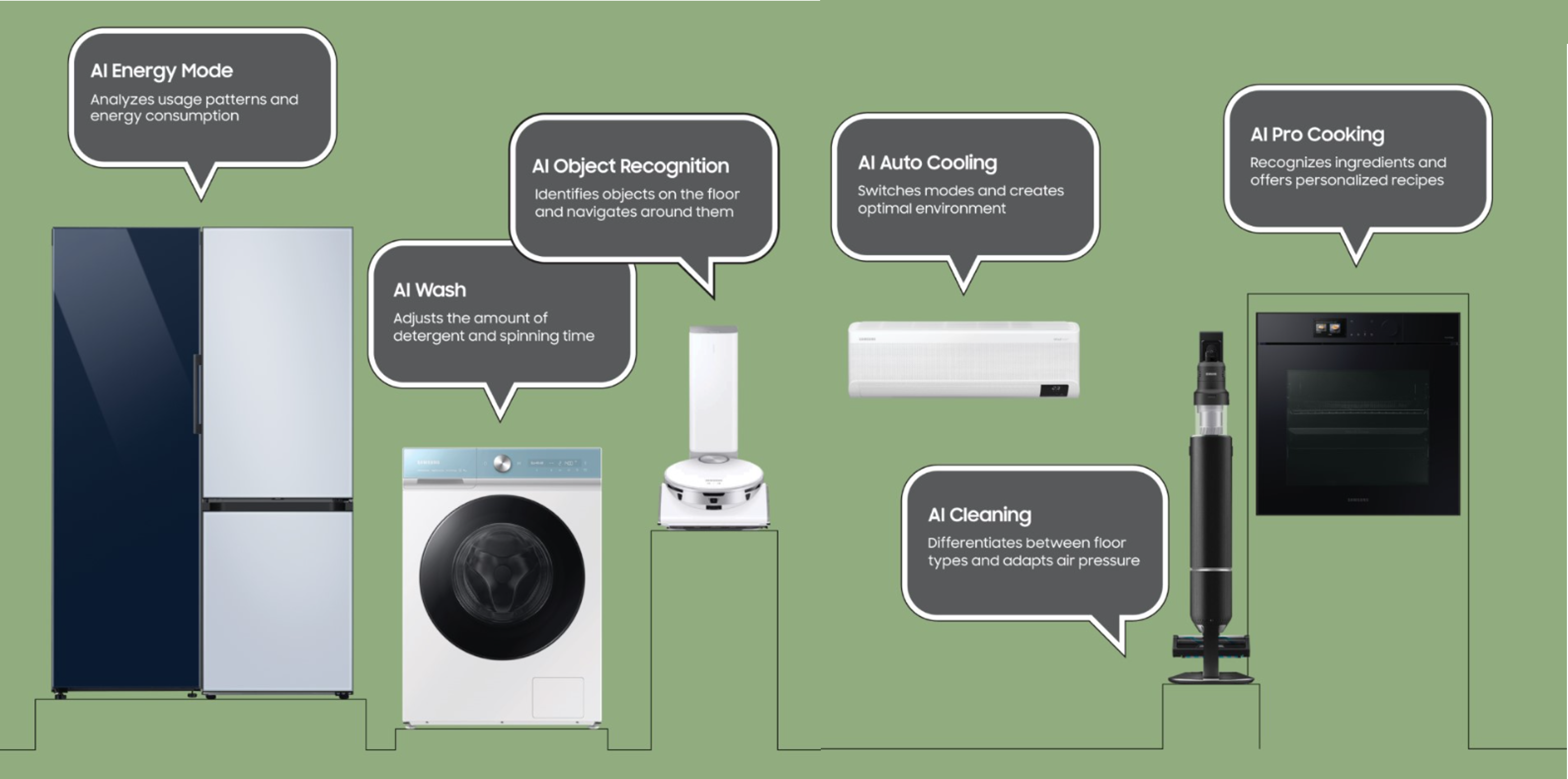
- Configuring and Managing Intelligent Thermostats, Lighting, and Appliances Employing AI
AI is used in smart home automation to improve efficiency and convenience. Thanks to artificial intelligence, you can easily set up and operate appliances, lights, and thermostats. Smart thermostats such as Nest are capable of automatically adjusting the temperature of your home by learning your schedule and personal preferences, to ensure your house is always pleasant. - Using AI to Control Smart Lighting and Appliances
You can even control your lights through voice commands or an app with AI-powered lighting systems such as Philips Hue. Lights can be dimmed, turned on or off, or have their colors changed by just speaking to or touching your phone screen. Smart appliances including washing machines and refrigerators may also be operated from a distance using your phone or voice. You can also use AI to customize home automation routines for energy efficiency and convenience.
Learn More: Samsung Launches Bespoke AI-powered Appliances
AI-Powered Language Translation

- Using AI Translation Tools for Real-Time Language Translation
AI-powered translation tools can help you easily communicate across different languages by providing real-time translation. For example, Google Translate can translate spoken words, written text, and even signs captured by your camera, within seconds. This is particularly useful when traveling or working in a multilingual environment. - Understanding Multilingual Content with AI Apps
AI apps like Microsoft Translator and iTranslate offer voice translation, text translation, and entire conversation translation. These tools provide accurate translations of books, video transcripts, and more, for easy understanding of content in any language.
AI in Education and Learning

- Learning Through AI-Powered Tutors
AI-powered tutoring services provide one-on-one support through apps like Squirrel AI. These tutors understand a student’s learning style and pace, offering personalized feedback and help in specific areas. This approach enhances the learning process and helps students achieve better results. - Using AI Tools for Studying, Homework Assistance, and Exam Preparation
AI tools like Socratic and Quizlet are useful for studying and homework assistance. They help students understand complex topics and solve problems with step-by-step solutions. For exam preparation, tools like PrepScholar offer personalized study plans, practice questions, quizzes, and mock exams, ensuring efficient and targeted studying.
Learn More: Top 25 AI Tools for Educators in 2024
Creative Projects Using AI

- Generating Music, Art, and Design Concepts Using AI Tools
AI is a game-changer for creative projects, enabling anyone to create music, art, and design concepts. Tools like Suno and Musicfy use AI to compose original music based on your preferences. You can choose the genre, mood, and instruments, and the AI generates a unique piece of music, perfect for content creators needing background music for videos or podcasts. - Creating Stunning Visuals with AI
In the art and design world, AI tools like DeepArt and Midjourney help generate stunning visuals. These tools use algorithms to create new images based on your inputs. You can mix and match different styles, adjust parameters, and produce artwork that suits your project, bringing creative ideas to life without needing advanced artistic skills.Learn More: 12 Best AI Image Generator Tools to Use in 2024
- Enhancing Creative Projects with AI for Photo Editing
AI excels in photo editing and enhancing creative projects. Tools like Adobe Photoshop and Luminar AI automate and enhance photo editing tasks with features like sky replacement, skin smoothing, and color correction. Additionally, AI tools like Canva suggest design elements, layouts, and color schemes, helping you create visually appealing designs quickly and efficiently.
Learn More: 10 Best AI Image Enhancers To Use in 2024
AI for Cooking and Meal Planning

- Using AI Apps for Recipe Suggestions
AI makes cooking and meal planning easier and more enjoyable. Apps like Yummly and Mealime use AI to suggest recipes based on your preferences and dietary needs. You can input what ingredients you have, and the AI will generate recipe ideas, saving you time and helping you make the most of what’s in your pantry. You can also give ingredients to tools like ChefGPT and it will give you an easy-to-cook recipe. - Getting Personalized Grocery Lists and Nutritional Advice
AI-powered apps can generate personalized grocery lists. After you choose your recipes for the week, the app creates a shopping list with all the necessary ingredients, categorizing items by aisle for efficient shopping. AI apps like Samsung Food and The Personalized Pantry also offer nutritional advice by analyzing the content of your meals and suggesting adjustments to meet your health goals. This way, they help you maintain a balanced diet tailored to your specific needs.
AI for Home Security

- Setting Up and Managing Smart Cameras and Security Systems with AI
AI enhances home security by making it smarter and more responsive. Setting up smart cameras and security systems has become easier with AI. Devices like Nest Cam use AI to monitor your home in real-time. You can control these devices through apps on your smartphone, allowing you to keep an eye on your home from anywhere. - Managing and Differentiating Activities Efficiently Using AI
Artificial Intelligence effectively handles security systems by distinguishing between routine and atypical behavior. For instance, if the system notices your pet moving about, it will notify you if it sees someone trying to enter. By doing this, fewer false alarms will go off and you’ll only get alerts about real risks. - Using AI for Anomaly Detection and Facial Recognition
Facial recognition driven by AI provides an additional degree of protection. To improve security, systems like Google Nest Hello recognize known faces and notify you when someone unfamiliar is at your door. AI systems can also identify anomalous actions or behavior, such as an abruptly opened window, and promptly notify you to stop possible security breaches.
Conclusion
AI is already transforming our daily lives, making tasks simpler and more efficient. Almost all the devices and services we use every day are now powered by AI. Phones use AI to learn how to identify and unlock faces and spoken instructions. AI-enabled streaming services like Netflix and Spotify suggest TV shows and music. AI-powered protection facilities and navigation are already making automobiles more intelligent.
The uses of AI in daily life are seamless, from helping us with meal planning and managing finances to enhancing home security and personalizing fitness routines. This advanced technology offers us practical solutions that improve convenience and productivity. By learning to use various AI tools, we can fully harness its potential, leading to smarter choices and better daily experiences. As AI continues to evolve, its applications will expand, further enhancing our ability to manage and enjoy our everyday activities.
Frequently Asked Questions
A. AI can help you in various ways such as content generation, fitness tracking, meal planning, shopping, health monitoring, home automation, home security, language translation, financial management, and education.
A. AI can help you do most of your daily tasks faster and increase your productivity and efficiency. This way you can save a lot of time to do other more important things or find time for yourself.
A. Here are some examples of AI we use in our daily lives: chatbots, virtual assistants, facial recognition tools, text and image creators and editors, fitness trackers, AI-powered home appliances, and AI-enhanced security systems.
- SEO Powered Content & PR Distribution. Get Amplified Today.
- PlatoData.Network Vertical Generative Ai. Empower Yourself. Access Here.
- PlatoAiStream. Web3 Intelligence. Knowledge Amplified. Access Here.
- PlatoESG. Carbon, CleanTech, Energy, Environment, Solar, Waste Management. Access Here.
- PlatoHealth. Biotech and Clinical Trials Intelligence. Access Here.
- Source: https://www.analyticsvidhya.com/blog/2024/06/uses-of-ai-in-daily-life/
- :has
- :is
- :not
- :where
- $UP
- 000
- 1
- 10
- 12
- 14
- 15%
- 16
- 21
- 23
- 25
- 480
- 491
- 6
- 8
- 816
- a
- ability
- About
- abruptly
- accurate
- Achieve
- across
- actions
- active
- activities
- activity
- add
- Additional
- Additionally
- adjust
- adjusting
- adjustments
- adjusts
- Adobe
- advanced
- Advanced Technology
- ADvantage
- advice
- After
- AI
- AI systems
- AI-powered
- aisle
- alarm
- Alert
- Alerts
- Alexa
- algorithms
- All
- Allowing
- almost
- already
- also
- alt
- always
- an
- analyze
- analyzes
- analyzing
- and
- anomaly detection
- Another
- anticipating
- any
- anyone
- anywhere
- app
- appealing
- Apple
- Apple Watch
- appliances
- applications
- appointment
- approach
- apps
- ARE
- areas
- Art
- articles
- artificial
- artificial intelligence
- artistic
- artwork
- AS
- ask
- asked
- Assistance
- Assistant
- assistants
- At
- audience
- automate
- automatically
- Automation
- automobiles
- available
- avoid
- background
- Balance
- balanced
- based
- BE
- become
- becoming
- been
- before
- begin
- behavior
- bespoke
- BEST
- Better
- between
- Beyond
- Block
- Blog
- Blog Posts
- body
- Books
- breaches
- Bringing
- budget
- budgeting
- Budgets
- burned
- busy
- but
- by
- call
- camera
- cameras
- CAN
- capable
- captions
- captured
- Capturing
- categories
- categorize
- categorizing
- certain
- challenging
- changed
- Changes
- chatbots
- choices
- Choose
- CO
- Coffee
- collected
- color
- Common
- communicate
- Commute
- complex
- concepts
- conditions
- content
- content creators
- content-creation
- continues
- control
- convenience
- Conversation
- cooking
- create
- creates
- Creating
- creation
- Creative
- creators
- customize
- daily
- data
- day
- day-to-day
- decisions
- Degree
- description
- Design
- designs
- Detection
- Devices
- Diet
- different
- distance
- do
- doing
- Door
- down
- dream
- driven
- during
- easier
- easily
- easy
- editors
- Education
- educators
- effectively
- efficiency
- efficient
- efficiently
- effortlessly
- elements
- emails
- employing
- enabling
- energy
- energy efficiency
- engaging
- enhance
- Enhances
- enhancing
- enjoy
- enjoyable
- ensure
- ensures
- ensuring
- Enter
- Entertainment
- Entire
- Environment
- Ether (ETH)
- Even
- EVER
- Every
- every day
- everyday
- evolve
- exact
- exam
- example
- examples
- excels
- exercises
- Expand
- expense
- expenses
- Experiences
- explore
- eye
- faces
- facial
- facial recognition
- facilities
- false
- faster
- Feature
- Features
- feedback
- fewer
- Finances
- financial
- financial management
- financially
- Find
- fitness
- For
- Free
- from
- fully
- further
- future
- Gadgets
- Gain
- game-changer
- generate
- generates
- generation
- generator
- genre
- get
- Give
- Go
- goal
- Goals
- going
- greatly
- grocery
- habits
- Handles
- harness
- Have
- Health
- healthcare
- healthy
- Heart
- help
- helping
- helps
- here
- High
- Home
- Home Automation
- Home Security
- homework
- House
- How
- How To
- HTML
- HTTPS
- ideas
- identify
- if
- image
- images
- Impact
- important
- improve
- improvements
- in
- includes
- Including
- Increase
- incredibly
- ingredients
- input
- inputs
- insights
- instance
- instantly
- instructions
- instruments
- Intelligence
- Intelligent
- into
- Intuit
- irregularities
- IT
- items
- ITS
- jpg
- just
- Keep
- keeps
- keyword
- Know
- known
- language
- Languages
- latest
- launches
- layouts
- leading
- LEARN
- learning
- Level
- Life
- lifestyle
- Lighting
- lights
- like
- List
- Lists
- Lives
- looking
- lose
- Lot
- Machines
- maintain
- make
- MAKES
- Making
- manage
- management
- managing
- Match
- May..
- me
- meals
- Media
- Meet
- messages
- Metrics
- Microsoft
- might
- minutes
- mix
- mom
- money
- Monitor
- monitoring
- monitors
- mood
- more
- more efficient
- morning
- most
- motivate
- moving
- Music
- Navigation
- necessary
- needing
- needs
- Nest
- Netflix
- never
- New
- note
- Notes
- now
- nutritional
- of
- off
- offer
- offering
- Offers
- on
- ONE
- only
- opened
- operate
- operated
- or
- original
- Other
- our
- out
- outlines
- Overcome
- Pace
- parameters
- particularly
- past
- patterns
- perfect
- personal
- Personalized
- pet
- phone
- phones
- photo
- physical
- Physical activity
- piece
- plan
- planned
- planning
- plans
- plato
- Plato Data Intelligence
- PlatoData
- pm
- Podcasts
- poor
- possible
- Posts
- potential
- powered
- Practical
- practice
- predict
- Predictions
- preferences
- preparation
- presence
- problems
- process
- produce
- productivity
- Progress
- project
- projects
- promptly
- protection
- provide
- provides
- providing
- purpose
- quality
- Questions
- Quick
- quickly
- Rate
- real
- real-time
- Reality
- recipe
- Recipes
- recognition
- recognize
- recommend
- recommendations
- relevant
- reminder
- replacement
- responsive
- Results
- revolutionized
- right
- risks
- routine
- routines
- Save
- saved
- saving
- say
- scenic
- schedule
- schemes
- sci-fi
- Screen
- seamless
- seconds
- security
- security breaches
- security systems
- sees
- sent
- Services
- set
- setting
- Shopping
- Shows
- significant
- Signs
- Similarly
- simpler
- simply
- siri
- skills
- Skin
- sky
- sleep
- smart
- Smart home
- smarter
- smartphone
- smartwatches
- Social
- social media
- Social Media Posts
- Solutions
- SOLVE
- some
- Someone
- speaking
- specific
- speed
- Spending
- Spending Habits
- spoken
- Spotify
- stay
- Step
- Steps
- Stop
- streaming
- streaming services
- streamlining
- strength
- Students
- Study
- Studying
- Stunning
- style
- styles
- such
- suggest
- Suit
- suits
- support
- sync.
- system
- Systems
- tailored
- Take
- taking
- Target
- targeted
- tasks
- Technology
- text
- than
- thanks
- that
- The
- their
- These
- they
- things
- this
- those
- thought
- Through
- time
- to
- tools
- top
- Top 10
- Topics
- touching
- track
- tracker
- Trackers
- Tracking
- tracks
- traffic
- Training
- Transform
- transforming
- translate
- Translation
- Translations
- traveled
- Traveling
- Trends
- trying
- Turned
- Tutoring
- tv
- type
- understand
- understanding
- unfamiliar
- unique
- unlock
- upcoming
- us
- use
- used
- useful
- User
- uses
- using
- Valuable
- various
- Video
- Videos
- Virtual
- virtual assistant
- visually
- visuals
- Voice
- voice commands
- walk
- washing
- Watch
- Way..
- ways
- we
- wearable
- wearable devices
- wearables
- week
- weight
- WELL
- What
- when
- which
- will
- window
- with
- within
- without
- words
- working
- workout
- workouts
- world
- write
- writers
- written
- you
- Your
- yourself
- youtube
- zephyrnet


